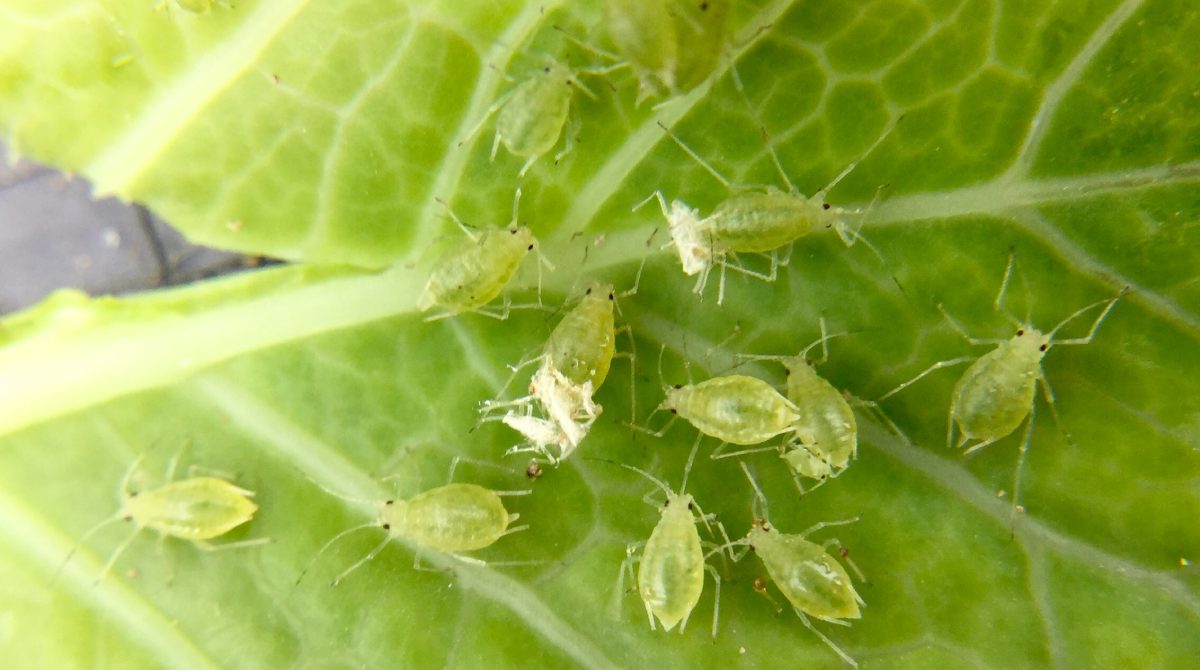Today I thought it would be beneficial to share info on these annoying little pests. You can see in the photo here some little bugs hanging out on a pepper plant flower. This photo was taken back in October when I was growing peppers from seed indoors. I've sadly thrown this plant out since the aphids kept coming back six times over and I got real sick of trying to get rid of them; but I took some shortcuts which is why that never worked. Learn from my laziness.
If you have aphids that have been living on a plant, you'll probably notice their white exoskeletons first. They shed them just as a gecko would shed it's skin. The bugs themselves are little pear shaped green dots. They like to target new growth especially, so that's where you'll notice them first. They do love to live underneath leaves too so when searching for them, checking under the leaves is always a best bet.
These guys like to eat the plant sap and sometimes leave behind a sweet sticky residue cslled honeydew. This can in turn attract other insects such as ants that like that sweet flavor. They cause a lot of damage like stunted growth and they will quickly make a healthy plant start yellowing and dropping its leaves. Luckily they are one of the easier pests to get rid of. I've found that blasting them off with a strong stream of water works best. I try not to use pesticides or neem or anything like that for these guys because the water is the easiest solution, and due to the fact they love to target human edible plants, it ends up ruining our pepper plants! I don't think it would be much of an issue if you used those methods on foliage plants however.
So, a strong spray of water helps. But what else? Diatomaceous earth is one such solution. This is white flour looking stuff that you can spread on the top soil. I would not recommend if this is a plant reachable by animals or kids though since it is a poisonous option. So what about soapy water? Yes, this helps too. And best of all it doesn't including introducing chemicals to the soil. An important tip too, is to refresh the soil once you treat the plant. This is what ultimately led to my pepper plants getting decimated time and time again; I never repotted them and they kept coming back. That, and being in such close conjunction with other plants around it. So with that said; isolate any plant that has pests on it. They'll just keep coming back!
If you're not opposed to introducing beneficial insects, lacewings and ladybugs love these little jerks. Though always be mindful of introducing non native species to your gardens.
Hopefully you never have to deal with an aphid infestation like I did, but know that if you do, there are much harder pests to get rid of... dont even get me started on spider mites... :')

